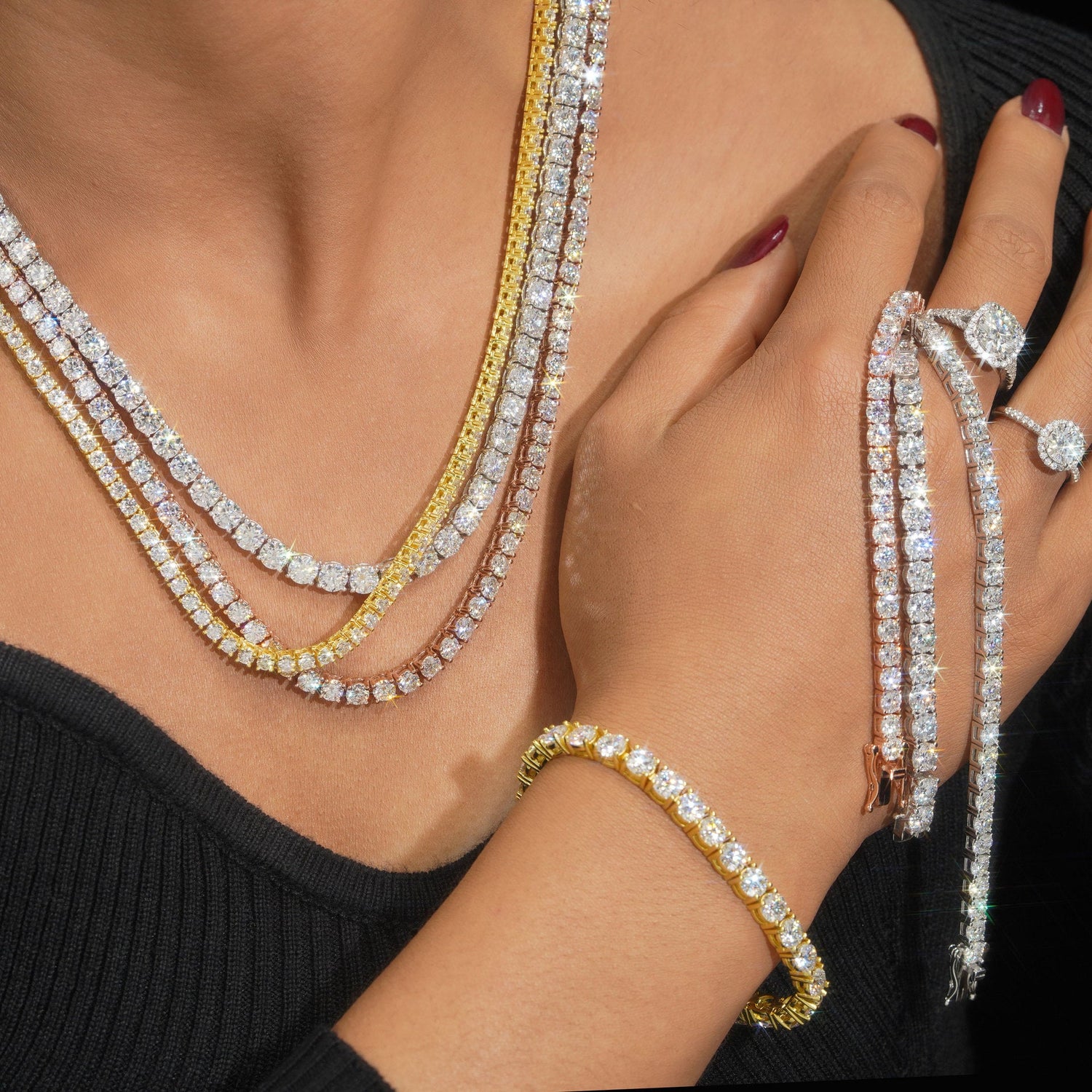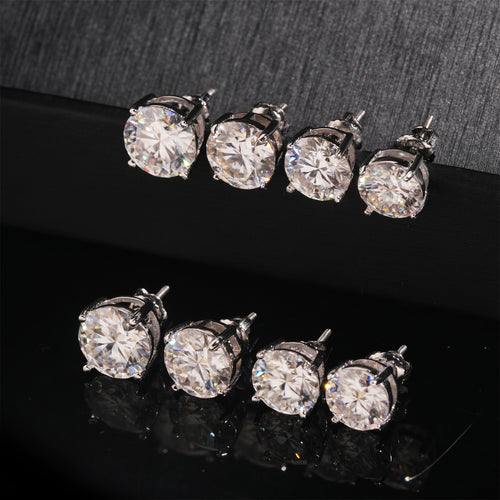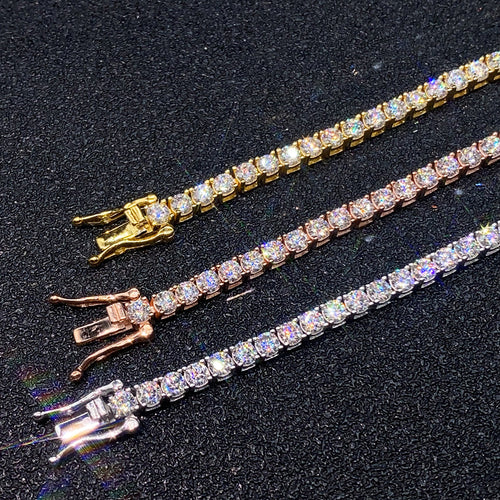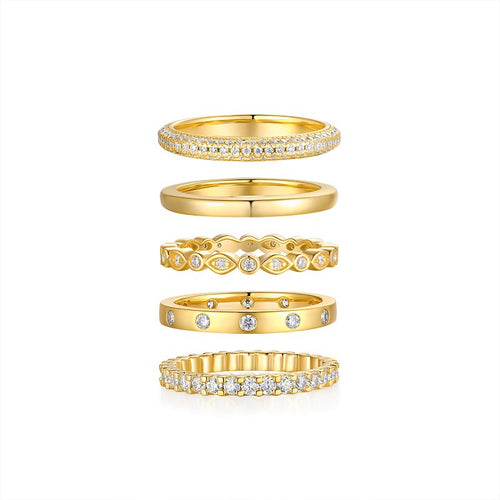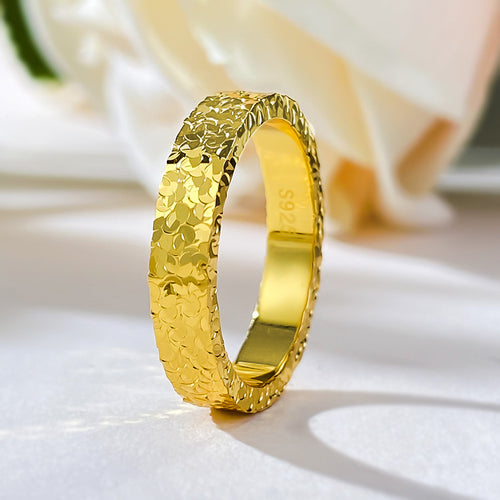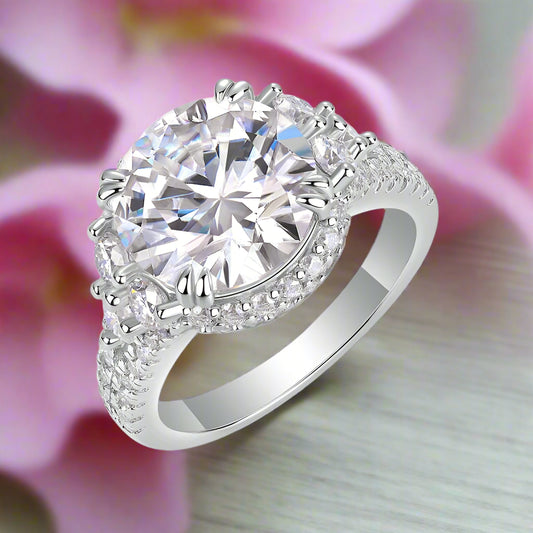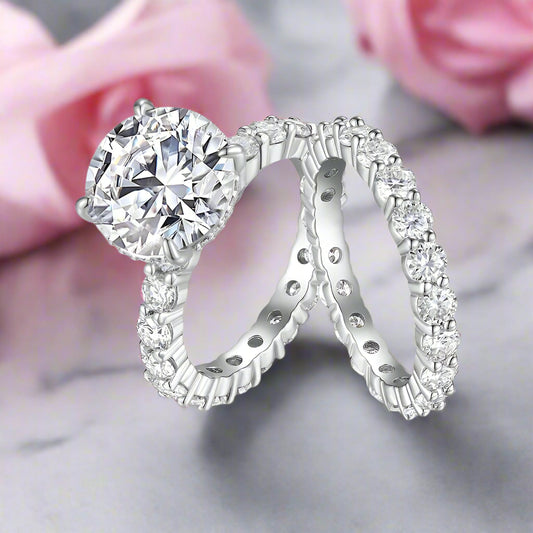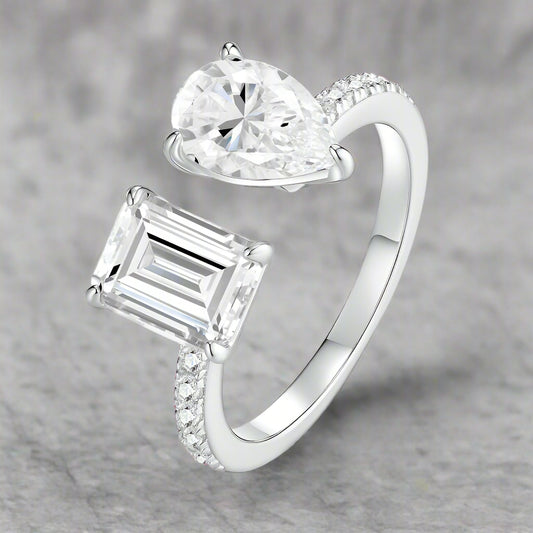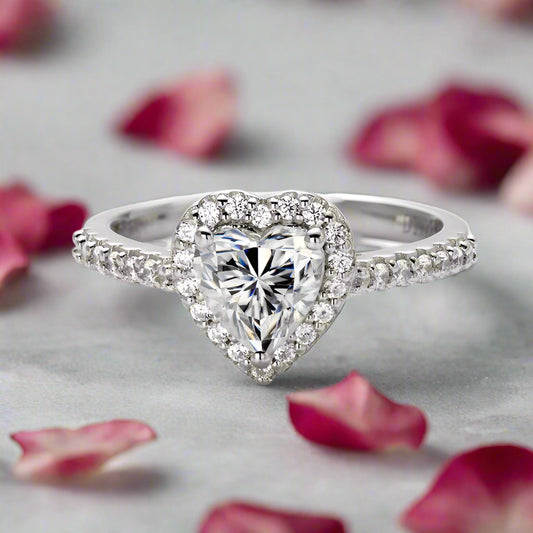Choosing an engagement ring is one of the most meaningful purchases you’ll ever make - and one of the trickiest when it comes to budgeting. Many couples ask the same question: How much should you spend on an engagement ring?
For decades, the so-called “three months’ salary rule” has been promoted as the standard - spend three months of income on the ring. While this guideline is still popular, it’s rooted more in marketing than reality. Today, couples are rethinking outdated rules and focusing on what works for their finances, lifestyle, and love story.
In this guide, ANNXMEE explores whether the three-month rule still matters, how to set a realistic engagement ring budget, and what factors truly influence cost.
The Engagement Ring Budget: Past vs. Present
📜 The Origins of the Three-Month Salary Rule

The three-month guideline was introduced by diamond companies in the mid-20th century to boost sales. It suggested that a larger financial commitment equaled a stronger declaration of love. For many years, this shaped cultural expectations around the cost of engagement rings.
💡 The Modern Perspective

Today, more couples prioritize financial health and shared values over marketing traditions. Instead of blindly following a formula, they base their decision on income, savings, and long-term goals. What matters most is choosing a ring that reflects your love - not the size of your paycheck.
Assessing Your Finances Before You Buy

Before walking into a jewelry store, it’s important to evaluate your financial picture.
-
Clarify your goals: Are you saving for a house, planning a wedding, or building an emergency fund?
-
Review your income & expenses: Understand your monthly cash flow to see how much you can comfortably allocate.
-
Consider debt: Paying down loans or credit cards may take priority over a big splurge.
A ring should be a joyful purchase, not a source of financial stress.
How to Calculate an Engagement Ring Budget

There are two practical approaches couples often use:
1. Engagement Ring Budget Calculator
By plugging in your monthly income, savings timeline, and desired percentage, you’ll get a clear target. For example:
-
Income: $4,000/month
-
Saving Period: 12 months
-
Savings Rate: 15%
Budget = $7,200
This method ensures your budget is tied to reality, not arbitrary rules.
2. Percentage of Income Approach
Traditionally, this meant 2–3 months’ salary. For example, with a $60,000 annual income, that would mean $10,000–$15,000. But you can adjust this percentage to align with your priorities - sometimes 1 month or even half a month’s income is more practical.
What Really Affects Engagement Ring Prices

When budgeting, remember that cost depends on several factors:
-
Diamond quality (the 4Cs) – Cut, Color, Clarity, Carat Weight
-
Carat size – Larger stones are exponentially more expensive
-
Cut & clarity balance – A well-cut diamond with minor inclusions can look stunning without the premium price
-
Metal choice – Gold (yellow, white, or rose) vs. platinum
-
Natural vs. lab-grown diamonds – Lab-created diamonds are eco-friendly, ethical, and typically cost less
By prioritizing what matters most (sparkle, size, or symbolism), you can maximize both beauty and value.
Engagement Ring Costs vs. Wedding Budget

It’s easy to overspend on the ring and leave little room for the wedding itself. Consider the big picture: venue, catering, photography, and honeymoon. Many couples choose to balance spending across all milestones rather than channeling it all into the ring.
Personalization and Custom Design
Your engagement ring doesn’t have to follow trends. Adding personal touches - engraving, unique gemstones, or birthstones - can make the ring even more meaningful. Some customizations may increase costs, but others (like minimalist settings) can make your ring more affordable and unique at the same time.
Market Trends: How Much Do People Really Spend?
Despite the three-month salary rule, data shows that most couples spend much less. In the U.S., the average engagement ring cost is around $5,500, which often equates to about 4% of annual income - far from the old-school marketing suggestion.
This proves one thing: the “right” budget is whatever fits your life and relationship.
Final Thoughts: How Many Months’ Salary for an Engagement Ring?
There’s no one-size-fits-all answer. The three-month salary rule may be a tradition, but it’s not a requirement. Your budget should reflect your financial stability, future goals, and what feels meaningful for you and your partner.
An engagement ring is more than a price tag - it’s a symbol of your love story. Whether you spend one month’s salary, three, or even less, the best ring is the one that makes you both feel confident, excited, and ready to take the next step together.

FAQs About Engagement Ring Budgets
Q1: Is the three-month salary rule still relevant when buying an engagement ring?
The three-month salary rule is more of a marketing tradition than a financial necessity. Today, most couples choose budgets that fit their personal finances and values instead of following this outdated guideline.
Q2: How much do people really spend on engagement rings today?
On average, couples in the U.S. spend around $5,000–$6,000, but many spend significantly less or more depending on their income, lifestyle, and ring preferences.
Q3: Should I budget based on gross or net salary for an engagement ring?
Always calculate based on net income (after taxes). This gives a realistic view of what you can comfortably spend without straining your budget.
Q4: What factors influence the cost of an engagement ring the most?
The biggest factors include the 4Cs of a diamond (cut, clarity, color, carat), the type of metal (gold vs. platinum), and whether you choose a natural or lab-grown diamond.
Q5: Are lab-grown diamonds a good alternative for engagement rings?
Yes. Lab-grown diamonds look identical to natural ones, cost 30–50% less, and are considered a more sustainable and ethical choice.
Q6: Can customizing an engagement ring affect the price?
Custom designs can increase the cost depending on materials and complexity, but they also make the ring uniquely personal. Some simple customizations, like engravings, are very affordable.
Q7: How do engagement ring costs connect with overall wedding expenses?
Overspending on the ring can limit funds for other wedding priorities like the venue, photography, or honeymoon. Balancing the ring budget with total wedding costs is key.
Q8: What’s the best way to set a realistic engagement ring budget?
Review your income, savings, and debts, then decide what you can comfortably afford without sacrificing long-term goals. Open discussions with your partner help set a budget that works for both of you.

